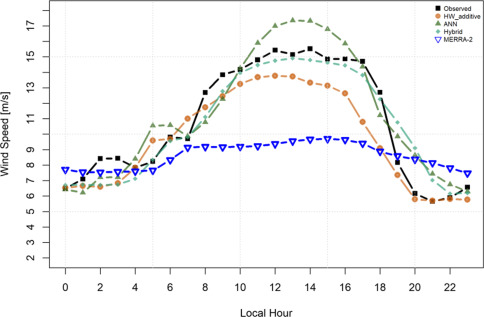
AI-Powered Weather Forecasting: A New Era of Accuracy and Efficiency
The pursuit of accurate weather forecasting has long been a cornerstone of scientific inquiry, with far-reaching implications for various sectors of the economy, from aviation to shipping. Traditionally, weather models have relied on complex equations governing thermodynamics and fluid dynamics in the atmosphere, requiring massive computational power and resources. However, a new approach has emerged, leveraging the capabilities of artificial intelligence (AI) and large language models to revolutionize the field of weather forecasting.
 Illustration of a six-day forecast of 10-meter wind speed and mean sea level pressure using a high-resolution version of Stomer (HR-Stormer) model.
Illustration of a six-day forecast of 10-meter wind speed and mean sea level pressure using a high-resolution version of Stomer (HR-Stormer) model.
Researchers from the US Department of Energy’s Argonne National Laboratory, in collaboration with the University of California, Los Angeles, have developed a novel AI-powered weather forecasting model, known as a foundation model. This innovative approach utilizes visual tokens, akin to image patches, to represent humidity, temperature, and wind speed at various atmospheric layers. By processing these visual tokens, the model can effectively capture spatial-temporal data, enabling accurate predictions at lower computational costs.
“Instead of being interested in a text sequence, you’re looking at spatial-temporal data, which is represented in images. When using these patches of images in the model, you have some notion of their relative positions and how they interact because of how they are tokenized.” - Sandeep Madireddy, Computer Scientist, Argonne National Laboratory
The benefits of this approach are twofold. Firstly, it offers more accurate forecasts than traditional numerical weather prediction models at a lower computational cost. Secondly, it provides scientists with an extra window into the weather, beating current models in prediction beyond seven days.
 Visual representation of wind speed forecast using AI-powered model.
Visual representation of wind speed forecast using AI-powered model.
While the private sector has shown significant interest in developing AI models for weather forecasting, the application of foundation models to climate modeling remains a challenge. According to Rao Kotamarthi, Senior Scientist at Argonne National Laboratory, “In theory, foundation models could also be used for climate modeling. However, there are more incentives for the private sector to pursue new approaches for weather forecasting than there are for climate modeling.”
“With the climate, we have gone from what had been a largely stationary state to a non-stationary state. This means that all of our statistics of the climate are changing with time due to the additional carbon in the atmosphere.” - Troy Arcomano, Postdoctoral Fellow, Argonne National Laboratory
The launch of Aurora, Argonne’s new exascale supercomputer, is expected to pave the way for the development of massive AI-based models that can operate at extremely high resolutions. As researchers continue to push the boundaries of AI-powered weather forecasting, it is evident that this technology has the potential to transform our understanding of the atmosphere and improve the accuracy of weather predictions.
 Illustration of the potential of AI-powered weather forecasting models.
Illustration of the potential of AI-powered weather forecasting models.














